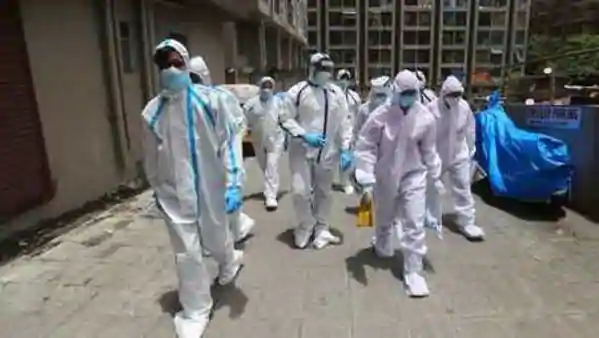PALGHAR DISTRICT ON HIGH ALERT ZONE
Maharashtra has been witnessing the highest number of COVID-19 cases daily and people of the state are already struggling with it, There comes another crisis is on the head another disease name- Crimean Congo Hemorrhagic Fever (CCHF), commonly known as the Congo fever has become a cause of concern for them.
Maharashtra's palghar district is on high alert by authorities in the Palghar district of Maharashtra against Congo fever. They have been told about how it occurs by the cattle breeders, animal husbandry officials, and meat sellers especially they need to take precautions for this disease and is transmitted from one animal to another through ticks and affects humans when they either come in contact with the blood of an infected animal or consume its meat. If this is not treated on time, Congo fever can cause the death of the affected person. As per the World Health Organisation statement, "Crimean-Congo haemorrhagic fever is a viral haemorrhagic fever usually transmitted by ticks. It can also be contracted through contact with viraemic animal tissues (animal tissue where the virus has entered the bloodstream) during and immediately post-slaughter of animals".
This Congo fever was first discovered in Crimea in 1944 and was named Crimean hemorrhagic fever. Later in 1969, scientists discovered that the pathogen responsible for causing Crimean hemorrhagic fever and the one that caused illness in Congo in 1956 was the same. Hence the name changed to Crimean-Congo haemorrhagic fever. As per WHO, CCHF is a great threat to the human population as it can lead to epidemics and its fatality ratio is 10 to 40 per cent. Congo in India is Currently a Cause of Concern For Maharashtra's Palghar District. As per WHO, Congo fever is a great threat to the human population as it can lead to epidemics and its fatality ratio is 10 to 40 per cent.
According to the CDC- Centers For Disease Control and Prevention, "Crimean-Congo haemorrhagic fever the symptoms are high fever, back pain, joint pain, headache, stomach pain, and vomiting. You can also experience signs like red eyes, a red throat, and red spots on the palate. In a serious case of CCHF, a patient's mood and sensory perception change. If this is not treated on time, CCHF can lead to severe nose bleeding and uncontrollable bleeding at the injection site. Diagnosis And Line of Treatment For Crimean-Congo Haemorrhagic Fever Certain lab tests including antigen detection, serum neutralisation, enzyme-linked immunosorbent assay, RT-PCR, and virus isolation by cell culture help in the diagnosis of the Congo fever. For detecting the viral load in patients who contracted the infection a few days ago, an RNA test was conducted".
Further added that, "Sadly, there is no specific treatment option available for Congo fever".Also, there is no vaccine available for use in animals. Therefore, doctors target the symptoms of the disease through medication. Majorly, antiviral drug ribavirin helps in this regard. Some prevention tricks guided are- To reduce the risk of a tick transmission of the infection, you should wear light coloured and protective clothing. You can also apply acaricides,chemicals that kill ticks on your clothes. Use tick repellent and avoid going to areas where the population of ticks is too much.
Later added that -To reduce the risk of transmission of Congo fever from animals to humans, you must wear protective clothing while you are in an endemic area where handling animals especially takes place or when they are slaughtered or killed.
It is also advised to treat the animals with pesticides two weeks before slaughtering them for reducing the risk of transmission of the Congo fever from human to human and need to avoid close contact with the people infected with CCHF and do not forget to wear protective equipment while taking care of ill people. Post that, do wash your hands properly.





The Brief. Sign up to receive the top stories you need to know right now.